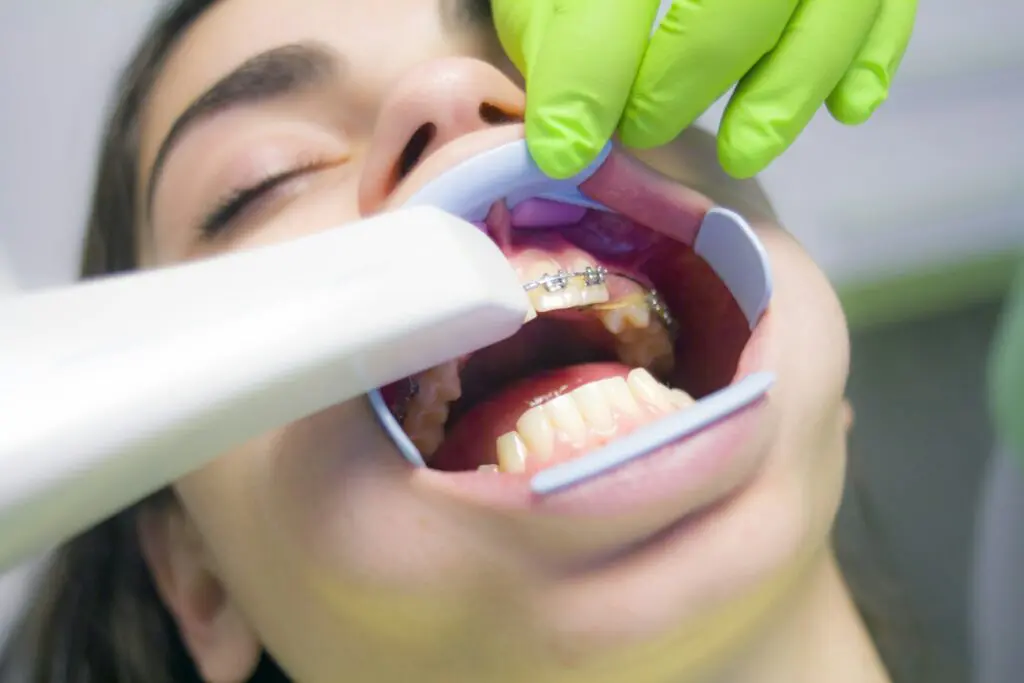First, chat with your orthodontist about your concerns and goals—they’ll guide you through the process and recommend the best type of braces for your needs, whether it’s traditional metal, ceramic, or even clear aligners. Remember, this time around, you’re armed with experience, so you know the importance of following through with all those little tips and tricks for maintaining your braces and ensuring your teeth stay in tip-top shape.

Reasons for Getting Braces a Second Time
There are several reasons why someone might require braces more than once. Over time, factors like aging, dental habits, and life changes can impact teeth alignment.
1. Tooth Movement and Shifting
- Teeth naturally shift as we age, even after wearing braces.
- Everyday activities like chewing or grinding your teeth can gradually move them out of alignment.
- Orthodontic treatment might be needed again to correct this shifting and restore alignment.
2. Wisdom Tooth Impact
- When wisdom teeth erupt, they can push nearby teeth out of place.
- This pressure can cause crowding, making previously straight teeth appear crooked.
- Removing wisdom teeth doesn’t always solve the problem; braces or aligners may still be necessary to fix alignment.
3. Neglecting Retainer Use
- Wearing a retainer regularly after braces is critical for maintaining results.
- Skipping your retainer can lead to teeth shifting back to their original position.
- Many patients who didn’t follow their retainer routine find themselves needing braces again.
4. Jaw Pain and Discomfort
- Misaligned teeth can lead to chronic jaw pain or chewing difficulties.
- A second round of braces can address jaw-and-bite-related issues, relieving discomfort and improving functionality.
Types of Braces for Second-Time Patients
Thankfully, there are different solutions available for second-time orthodontic patients. The right choice depends on your needs, preferences, and budget.
1. Traditional Braces
- What They Are: Metal braces with brackets and wires are a tried-and-true method.
- Benefits: Very effective for even complex alignment issues.
- Why Choose Them Again: Advances in technology have made them more comfortable and efficient than ever.
2. Clear Aligners
- What They Are: Transparent, removable trays like Invisalign that straighten teeth discreetly.
- Benefits: Nearly invisible and easy to remove for eating or brushing.
- Why Choose Them: Perfect for adults seeking a more aesthetic and convenient option.
3. Lingual Braces
- What They Are: Braces placed behind the teeth, hidden from view.
- Benefits: Works like traditional braces but remains out of sight, making them great for patients concerned about appearance.
- Why Choose Them: A hidden alternative that offers effective results without visible hardware.
Oral Health Considerations
Whether it’s your first or second time with braces, maintaining oral health is critical to treatment success.
1. Oral Hygiene
- Brush and floss regularly to prevent plaque buildup around brackets or under aligners.
- Use orthodontic tools like floss threaders and interdental brushes to clean every hard-to-reach spot.
- Poor hygiene can lead to cavities, gum issues, and treatment delays.
2. Dietary Adjustments
- Avoid hard foods like nuts, popcorn, and ice that could damage braces.
- Skip sticky treats like caramels and gum to prevent potential damage to appliances.
- Focus on braces-safe options like yogurt, scrambled eggs, soft fruits, and pasta.
Managing Pain and Discomfort
Wearing braces a second time can come with temporary discomfort, especially during adjustments or when switching aligners.
Tips for Pain Relief
- Apply orthodontic wax to smooth any brackets or wires causing irritation.
- Use over-the-counter pain relievers for minor soreness.
- Rinse with warm salt water to soothe the gums.
- A cold compress can reduce swelling or tenderness in the jaw or cheeks.
These strategies can help make the experience more comfortable as you adjust to treatment.
Benefits of a Second Orthodontic Treatment
Although it can feel frustrating to revisit orthodontic treatment, there are many long-term advantages to consider.
1. Improved Oral Health
- Fixing misalignment issues can make brushing and flossing more effective.
- Properly aligned teeth are easier to care for, reducing the risk of cavities and gum disease.
- Realigning your bite can reduce jaw pain and prevent excessive tooth wear.
2. Enhanced Aesthetics
- Crooked teeth or gaps can impact your confidence.
- A second treatment helps perfect your smile, letting you feel proud to show it off.
- The psychological boost of a confident smile can improve both personal and professional interactions.

Why Choose Our Orthodontic Office in Austin, TX?
At our Austin orthodontic office, we focus on providing top-quality care in a friendly and welcoming environment. Here’s why families trust us with their smiles:
Experienced Orthodontists
Our orthodontist has years of experience treating kids and teens with jaw alignment issues. We use advanced treatments like reverse pull headgear to get great results.
Custom Treatment Plans
Every smile is different, so we create personalized treatment plans to fit each patient’s needs.
Support Every Step of the Way
From the first visit to the last, our team will guide you, answer questions, and make sure treatment goes smoothly.
Multiple Treatment Options
We offer traditional braces, Invisalign, and specialized appliances like reverse pull headgear to help every patient get the best results.
Book Your Free Consultation Today!
Visit our Austin, TX, office for a free consultation! We’ll check your teeth, discuss your options, and create a plan to help you get a straight, confident smile. Scheduling is easy—call us or visit our website to find a time that works for you. Our friendly team is here to answer your questions and support you every step of the way!
About the Authors
Dr. Rodrigo Viecilli – Orthodontist in Austin, TX
Frequently Asked Questions
Is it cheaper to get braces the second time?
If your teeth have shifted slightly, the treatment might be shorter and less complex, which could lower the cost. Some orthodontists offer discounts for repeat patients or have payment plans to make it easier on your wallet. However, if significant work is needed, the price might be similar to the first time. It’s always a good idea to have a chat with your orthodontist to explore your options and find a plan that works for you.
Is there a limit to how many times you can get braces?
There’s really no hard limit on how many times you can have them, as it all depends on your individual dental needs and the advice of your orthodontist. Sometimes teeth can shift back over time, or new dental issues might arise, so getting braces again can be a great option to maintain that perfect smile. Just be sure to have a chat with your orthodontist to explore the best plan for your teeth!
Will I need braces again if I don’t wear my retainer?
If you don’t wear your retainer, there’s a chance your teeth might shift back to their old positions over time. Retainers are like the guardians of your beautiful smile, helping to keep everything in place after your braces have done their job. So, while it might not happen overnight, skipping out on wearing your retainer could mean needing braces again down the road. It’s always a good idea to follow your orthodontist’s advice to keep that smile shining bright!


